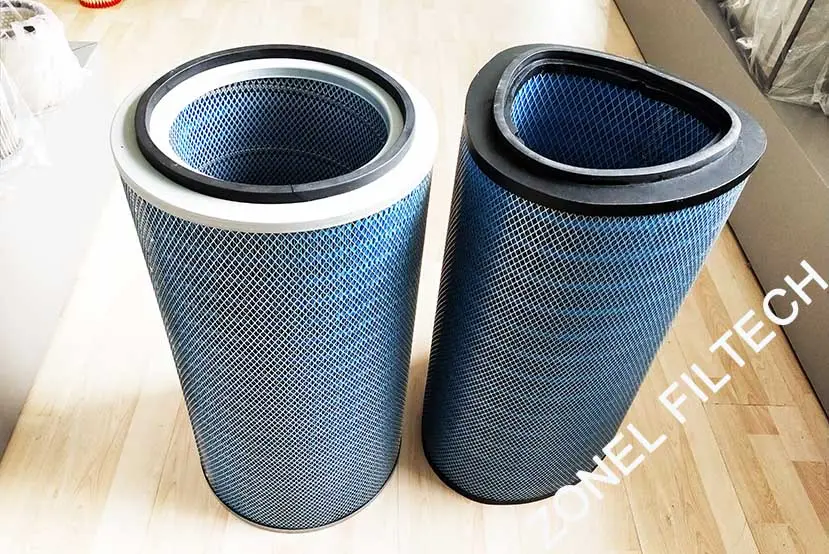Dust collector filters are essential for preserving the cleanliness of the air and guaranteeing the effectiveness of industrial operations. By capturing dust, contaminants, and fine particles, these filters keep the environment clean and activities unhindered. To increase their longevity and lower operating expenses, these filters must be maintained. We’ll look at useful advice in this post to help you prolong the life of your dust collector filters without sacrificing system functionality.
Table of Contents
ToggleImportance of Proper Maintenance
Regular maintenance of dust collector filters offers several benefits:
- Cost Savings: Extending filter life reduces replacement frequency, saving money.
- Enhanced Efficiency: Clean filters operate at optimal performance, maintaining air quality and airflow.
- Improved Safety: The chance of filter failure, which could result in dust explosions or other environmental problems, is decreased by proper maintenance.
- Regulatory Compliance: Well-maintained filters help meet environmental and occupational safety standards.
Common Causes of Premature Filter Failure
Prior to delving into maintenance advice, it’s critical to comprehend the elements that can reduce filter lifespan:
- Improper Installation: Misaligned or loose filters allow dust bypass, increasing wear and tear.
- Overloading: Excessive dust accumulation clogs filters, reducing efficiency and lifespan.
- Moisture Exposure: Humidity or liquid contaminants degrade filter media.
- Improper Cleaning: Aggressive or infrequent cleaning damages filter fibers.
- Wrong Filter Selection: Using the wrong filter for the application or dust type can lead to faster wear.
Maintenance Tips to Extend Filter Life

Inspect Filters Regularly
- Frequency: Conduct visual inspections weekly or monthly, depending on usage.
- What to Look For: Check for damage, tears, or excessive dust buildup.
- Tools: Use inspection hatches or cameras for hard-to-reach areas.
Benefits:
- Early detection of issues prevents costly breakdowns.
- Maintains consistent airflow and filtration efficiency.
Use Proper Cleaning Techniques
Cleaning dust collector filters is crucial, but improper methods can cause damage. Here’s how to clean effectively:
Methods:
Pulse-Jet Cleaning: Use compressed air to clean filters without removing them.
Ensure the pressure is appropriate for the filter type to avoid damaging the fibers.
Manual Cleaning: Use a soft brush or low-pressure air to gently remove dust from filters that cannot be cleaned in situ.
Avoid harsh scrubbing that may damage filter media.
Tips:
- Follow the manufacturer’s cleaning recommendations.
- Do not over-clean; unnecessary cleaning cycles can wear out filters prematurely.
Monitor Differential Pressure
Differential pressure measures the resistance across the dust collector filter. High differential pressure indicates a clogged filter.
Actions:
- Install pressure gauges to monitor performance.
- Clean or replace filters when pressure exceeds the recommended range.
Benefits:
- Ensures optimal airflow and system efficiency.
- Prevents overloading the system, which can lead to filter failure.
Control Dust Loading
Excessive dust loading can overwhelm the filter system, reducing its lifespan. Minimize loading by:
- Pre-Filtration: To catch bigger particles before they get to the main filter, use cyclones or pre-filters.
- Proper Operation: Avoid sudden spikes in dust production during processes.
- System Design: Ensure ducting and airflow systems are correctly designed to distribute dust evenly.
Benefits:
- Reduces stress on filters, increasing their longevity.
- Prevents clogging and uneven wear.
Prevent Moisture Contamination
Moisture is a leading cause of filter damage, particularly in applications involving hygroscopic dust or high humidity.
Tips:
- Install moisture separators or dehumidifiers upstream of the dust collector.
- Use filter media designed to resist moisture in humid environments.
- Ensure proper drainage in systems prone to condensation.
Benefits:
- Prevents filter media degradation and microbial growth.
- Improves filtration performance in challenging environments.
Replace Gaskets and Seals
Worn-out gaskets and seals allow dust to bypass the filter, leading to inefficient filtration and contamination.
Actions:
- Inspect and replace gaskets during routine maintenance.
- Ensure seals are properly aligned and secure during installation.
Benefits:
- Maintains filter integrity and prevents leakage.
- Reduces stress on the filter media by ensuring proper airflow.
Choose the Right Filter for Your Application
Inefficiency and early wear might result from using the incorrect kind of filter. Think about the following:
- Dust Type: Match filter material to the dust properties (e.g., abrasive, sticky, or fine).
- Temperature: Select filters that can withstand the operating temperature of your process.
- Efficiency Requirements: Select filters that adhere to industry performance and regulatory requirements.
Benefits:
- Optimizes performance and longevity.
- Reduces the need for frequent replacements.
Train Personnel on Proper Maintenance
Ensure that your maintenance team understands best practices for handling and maintaining dust collector filters.
Training Topics:
- Proper cleaning techniques.
- Recognizing signs of filter wear or damage.
- Safe handling and installation procedures.
Benefits:
- Reduces human errors that can damage filters.
- Ensures consistent and effective maintenance.
Cost Analysis: Maintenance vs. Replacement
Proper maintenance can significantly reduce overall costs compared to frequent filter replacement. The table below illustrates the potential savings:
| Aspect | Regular Maintenance | Frequent Replacement |
| Filter Lifespan | 2–3 years | 6–12 months |
| Annual Maintenance Costs | $500–$1,000 | $200–$500 |
| Annual Replacement Costs | $1,000–$3,000 | $3,000–$6,000 |
| Total Cost (5 Years) | $7,500–$20,000 | $15,000–$30,000 |
Key Insight:
Investing in proper maintenance can cut costs by up to 50% over a five-year period.
Signs It’s Time to Replace Filters
Despite your best efforts, filters will eventually need replacement. Watch for these signs:
- Persistent high differential pressure even after cleaning.
- Visible tears, holes, or damage in the filter media.
- Decreased system performance or airflow.
- Dust leaks or emissions escaping the system.
Conclusion
Extending the life of dust collector filters requires regular maintenance, proper cleaning, and proactive measures to prevent damage. By following the tips outlined in this article—such as monitoring differential pressure, controlling dust loading, and using the correct cleaning techniques—you can maximize filter performance while minimizing costs. Remember, a well-maintained filtration system not only saves money but also ensures compliance with environmental and safety regulations, keeping your operations running smoothly and efficiently.
